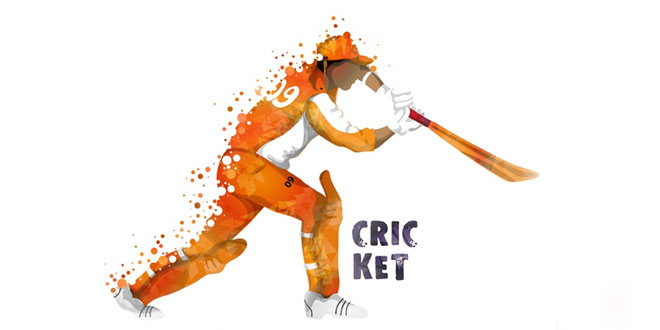History and Sport: The Story of Cricket – Page [VIII]
Question: Describe the modern transformation of the game.
Answer: Modern cricket is dominated by Tests and one-day internationals, played between national teams. The players who become famous, who live on in the memories of cricket’s public, are those who have played for their country. The players Indian fans remember from the era of the Pentangular and the Quadrangular are those who were fortunate enough to play Test cricket. C.K. Nayudu, an outstanding Indian batsman of his time, lives on in the popular imagination when some of his great contemporaries like Palwankar Vithal and Palwankar Baloo have been forgotten because his career lasted long enough for him to play Test cricket for India while theirs did not.
Even though Nayudu was past his cricketing prime when he played for India in its first Test matches against England starting in 1932, his place in India’s cricket history is assured because he was the country’s first Test captain. India entered the world of Test cricket in 1932, a decade and a half before it became an independent nation. This was possible because Test cricket from its origins in 1877 was organised as a contest between different parts of the British empire, not sovereign nations. The first Test was played between England and Australia when Australia was still a white settler colony, not even a self-governing dominion. Similarly, the small countries of the Caribbean that together make up the West Indies team were British colonies till well after the Second World War.
Question: Describe the effect of decolonisation on the sports.
Answer: Decolonization, or the process through which different parts of European empires became independent nations, began with the independence of India in 1947 and continued for the next half a century. This process led to the decline of British influence in trade, commerce, military affairs, international politics and, inevitably, sporting matters. But this did not happen at once; it took a while for the relative importance of post imperial Britain to be reflected in the organisation of world cricket. Even after Indian independence kick-started the disappearance of the British empire, the regulation of international cricket remained the business of the Imperial Cricket Conference ICC. The ICC, renamed the International Cricket Conference as late as 1965, was dominated by its foundation members, England and Australia, which retained the right of veto over its proceedings. Not till 1989 was the privileged position of England and Australia scrapped in favor of equal membership.
The colonial flavor of world cricket during the 1950s and 1960s can be seen from the fact that England and the other white commonwealth countries, Australia and New Zealand, continued to play Test cricket with South Africa, a racist state that practiced a policy of racial segregation which, among other things, barred non-whites (who made
up the majority of South Africa’s population) from representing that country in Test matches. Test-playing nations like India, Pakistan and the West Indies boycotted South Africa, but they did not have the necessary power in the ICC to debar that country from Test cricket. That only came to pass when the political pressure to isolate South
Africa applied by the newly decolonised nations of Asia and Africa combined with liberal feeling in Britain and forced the English cricket authorities to cancel a tour by South Africa in 1970.
Question: How was cricket commercialized?
Answer: The 1970s were the decade in which cricket was transformed: it was a time when a traditional game evolved to fit a changing world. If 1970 was notable for the exclusion of South Africa from international cricket, 1971 was a landmark year because the first one-day international was played between England and Australia in Melbourne. The enormous popularity of this shortened version of the game led to the first World Cup being successfully staged in 1975. Then in 1977, even as cricket celebrated 100 years of Test matches, the game was changed forever, not by a player or cricket administrator, but by a businessman.
Kerry Packer, an Australian television tycoon who saw the moneymaking potential of cricket as a televised sport, signed up fifty-one of the world’s leading cricketers against the wishes of the national cricket boards and for about two years staged unofficial Tests and One-Day internationals under the name of World Series Cricket. While Packer’s ‘circus’ as it was then described folded up after two years, the innovations he introduced during this time to make cricket more attractive to television audiences endured and changed the nature of the game.
Question: How was satellite communication useful in the spread of cricket?
Answer: Television coverage changed cricket. It expanded the audience for the game by beaming cricket into small towns and villages. It also broadened cricket’s social base. Children who had never previously had the chance to watch international cricket because they lived outside the big cities, where top-level cricket was played, could now watch and learn by imitating their heroes.
The technology of satellite television and the world wide reach of multi-national television companies created a global market for cricket. Matches in Sydney could now be watched live in Surat. This simple fact shifted the balance of power in cricket: a process that had been begun by the break-up of the British Empire was taken to its logical conclusion by globalization. Since India had the largest viewership for the game amongst the cricket-playing nations and the largest market in the cricketing world, the game’s center of gravity shifted to South Asia. This shift was symbolized by the shifting of the ICC headquarters from London to tax-free Dubai.
 Class Notes NCERT Solutions for CBSE Students
Class Notes NCERT Solutions for CBSE Students



